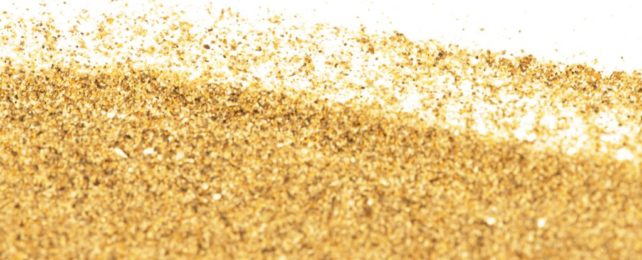Porous particles of silica made from purified sand could one day play a role in attempts to lose weight.
Past clinical trials have already produced promising results, but the actual weight-lowering mechanism behind the potential treatment has been poorly understood.
To sift out the key variables, researchers have now tested a range of silica sizes and shapes in a simulation of the human gut after a heavy meal.
The results support the idea that porous silica can "impede the digestive processes" that are usually triggered by enzymes breaking down fat, cholesterol, starches, and sugars in the stomach and intestines.
What's more, the size of administered nanoparticles seems to determine how much digestive activity is inhibited.
The authors acknowledge that their model is much too simple to perfectly mimic the complexity of the human gut during digestion, but given the ethics surrounding human clinical trials, gut simulations and animal models are closer than researchers might otherwise get.
Unlike other human gut models, this new one accounts for both fat digestion and carbohydrate digestion. The authors also analyzed the degree to which organic matter might be absorbed within the gastrointestinal tract.
It's possible that porous silica triggers a reduction of weight gain in other ways, too, but the new findings provide additional research with a more solid place to start.
In 2014, researchers found mice on high fat diets put on significantly less weight when fed nanoparticles of porous silica (MSPs). Their total body fat percentage was also reduced. Still, that effect seemed to be based on the relative size of the silica particles used. Larger particles were ultimately more effective.
Follow-up studies on mice supported these results. The right size and shape of porous silica particles seemed to determine the power of mouse digestion in the small intestine.
In 2020, the first clinical data on 10 healthy humans with obesity demonstrated that MSPs can reduce blood glucose levels and blood cholesterol levels, both of which are known risk factors for metabolic and cardiovascular complications.
Even better, the treatment did not trigger any abdominal discomfort or changes to bowel habits, which can't be said of current medicines for weight gain like Orlistat.
The current research elaborates on these promising findings by comparing an array of 13 porous silica samples of various widths, absorption potentials, shapes, sizes, and surface chemistries.
These samples were each introduced to a human gastrointestinal model that simulated a fed state after a high-carbohydrate, high-fat meal. The model allowed for half an hour of gastric digestion and an hour of intestinal digestion and absorption.
Fat digestion was monitored by titrating fatty acids from what was absorbed, while starch digestion was monitored by measuring the concentration of sugars absorbed.
The authors say the ideal silica samples were silica microparticles with pore widths between 6 and 10 nanometers. These sizes seemed to inhibit the enzymes examined best.
The pores don't just appear to trap enzymes, either. It's more complicated than that, researchers think.
Some pores which were the optimal size for inhibiting starch digestion, for instance, were too large to optimally trap enzymes associated with fat digestion.
The porous sand particles also seemed to absorb digested and undigested nutrients from the gastrointestinal tract before they could pass into the system's bloodstream.
This could be another way in which the particles counter the input of calories.
Those particles with greater surface areas but smaller pores unable to impact digestive enzymes actually absorbed the most organic matter in models.
Further research on animal models will be needed to replicate these results. Maybe after that, the proposed mechanism can be validated in human clinical trials.
The study was published in Pharmaceutics.
